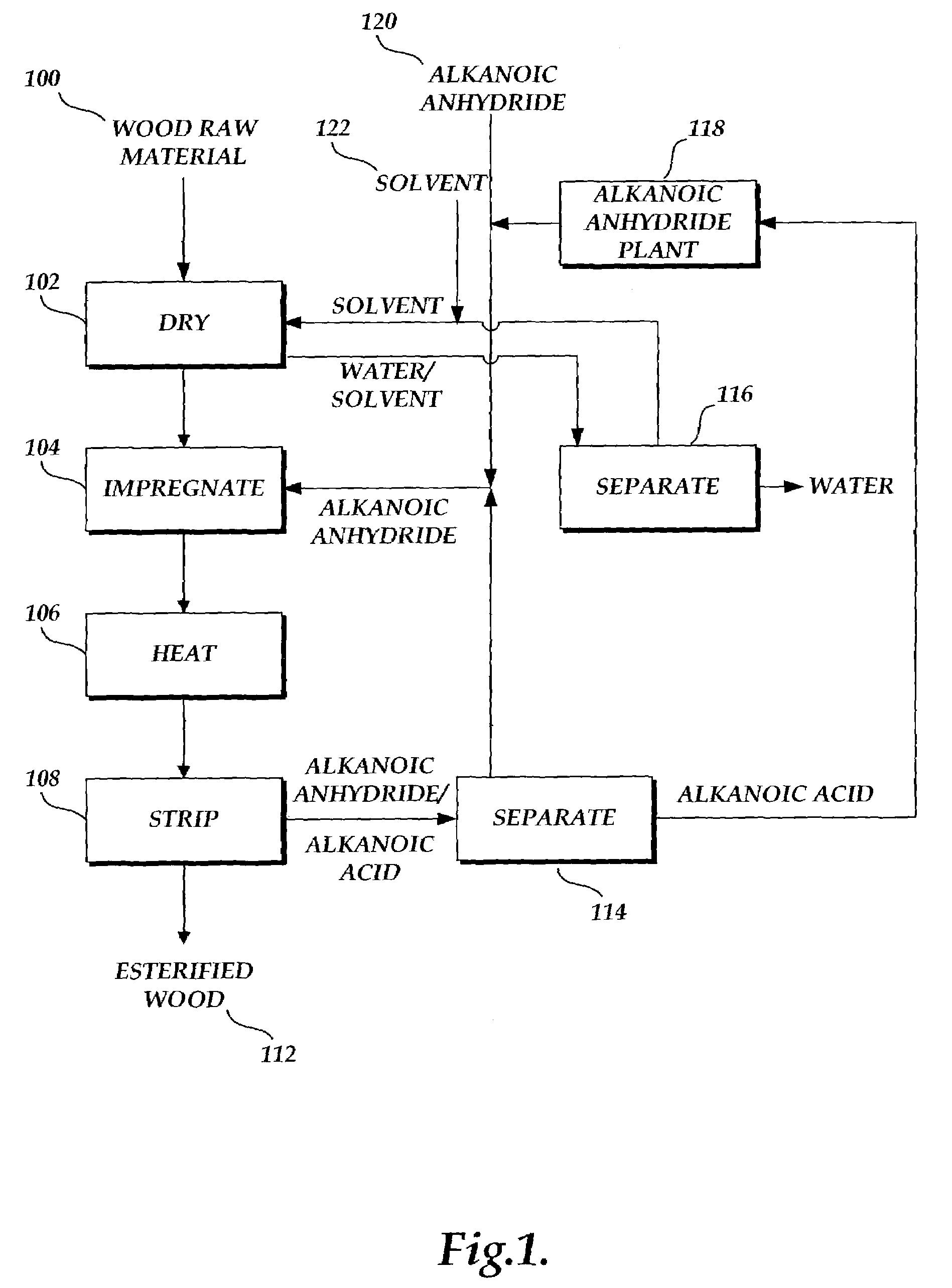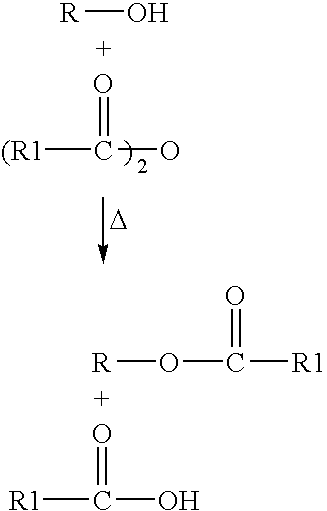Methods for esterifying hydroxyl groups in wood
a technology of hydroxyl groups and esterification methods, which is applied in the field of esterification of hydroxyl groups in wood, can solve the problems of affecting the quality of wood, affecting the durability of wood, and requiring a long time to reach the desired moisture level, so as to achieve greater durability and dimensional stability. the effect of stability
- Summary
- Abstract
- Description
- Claims
- Application Information
AI Technical Summary
Benefits of technology
Problems solved by technology
Method used
Image
Examples
Embodiment Construction
[0015]Referring to the FIGURE, a representative method of esterification includes a drying step, represented by block 102, an impregnating step, represented by block 104, a heating step, represented by block 106, and a stripping step, represented by block 108. Esterification refers to the process of converting the hydroxyl groups to an ester group on at least some of the cellulose, hemicellulose, and lignin molecules found in wood. The esterified wood contains compounds represented by the following simplified chemical formula, wherein R can be any cellulose, hemicellulose, or lignin molecule. It is to be appreciated that more than one ester moiety can be provided on a cellulose, hemicellulose, or lignin molecule.
[0016]
[0017]The moieties R1 have from 1 to 5 carbon atoms. One representative R1 moiety is a methyl group. Moieties R1 may be saturated, unsaturated, substituted, unsubstituted, linear, and branched groups. One representative method for providing ester groups in wood is thro...
PUM
| Property | Measurement | Unit |
|---|---|---|
| Fraction | aaaaa | aaaaa |
| Fraction | aaaaa | aaaaa |
| Fraction | aaaaa | aaaaa |
Abstract
Description
Claims
Application Information
 Login to View More
Login to View More - R&D
- Intellectual Property
- Life Sciences
- Materials
- Tech Scout
- Unparalleled Data Quality
- Higher Quality Content
- 60% Fewer Hallucinations
Browse by: Latest US Patents, China's latest patents, Technical Efficacy Thesaurus, Application Domain, Technology Topic, Popular Technical Reports.
© 2025 PatSnap. All rights reserved.Legal|Privacy policy|Modern Slavery Act Transparency Statement|Sitemap|About US| Contact US: help@patsnap.com



